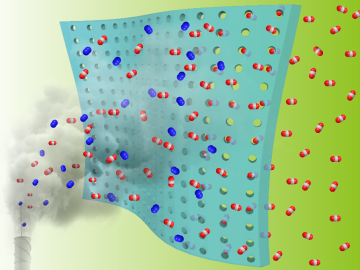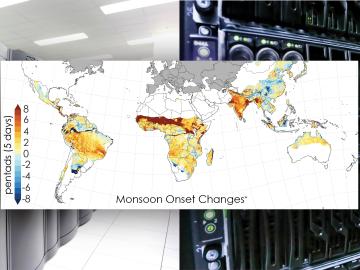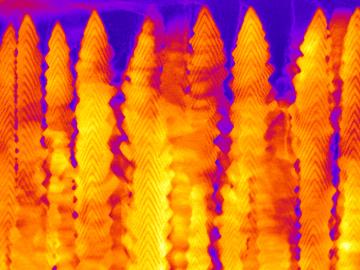
Filter News
Area of Research
- Advanced Manufacturing (5)
- Biology and Environment (48)
- Computational Biology (1)
- Computational Engineering (1)
- Computer Science (6)
- Electricity and Smart Grid (1)
- Energy Science (96)
- Fuel Cycle Science and Technology (1)
- Fusion and Fission (34)
- Fusion Energy (5)
- Isotope Development and Production (1)
- Isotopes (5)
- Materials (103)
- Materials Characterization (1)
- Materials for Computing (14)
- Materials Under Extremes (1)
- National Security (39)
- Neutron Science (42)
- Nuclear Science and Technology (26)
- Quantum information Science (3)
- Sensors and Controls (1)
- Supercomputing (106)
News Type
News Topics
- (-) Artificial Intelligence (112)
- (-) Computer Science (174)
- (-) Cybersecurity (31)
- (-) Grid (48)
- (-) Hydropower (6)
- (-) Materials Science (111)
- (-) Nuclear Energy (94)
- (-) Physics (60)
- (-) Polymers (22)
- (-) Security (28)
- 3-D Printing/Advanced Manufacturing (104)
- Advanced Reactors (24)
- Big Data (53)
- Bioenergy (93)
- Biology (106)
- Biomedical (59)
- Biotechnology (35)
- Buildings (45)
- Chemical Sciences (70)
- Clean Water (18)
- Composites (23)
- Coronavirus (36)
- Critical Materials (16)
- Education (5)
- Element Discovery (1)
- Emergency (3)
- Energy Storage (75)
- Environment (154)
- Exascale Computing (64)
- Fossil Energy (7)
- Frontier (60)
- Fusion (54)
- High-Performance Computing (113)
- Isotopes (53)
- ITER (6)
- Machine Learning (50)
- Materials (111)
- Mathematics (8)
- Mercury (9)
- Microelectronics (4)
- Microscopy (40)
- Molten Salt (5)
- Nanotechnology (46)
- National Security (78)
- Neutron Science (136)
- Partnerships (67)
- Quantum Computing (48)
- Quantum Science (79)
- Simulation (52)
- Software (1)
- Space Exploration (16)
- Statistics (3)
- Summit (62)
- Transportation (56)
Media Contacts

Scientists at ORNL used neutron scattering and supercomputing to better understand how an organic solvent and water work together to break down plant biomass, creating a pathway to significantly improve the production of renewable

Researchers at the Department of Energy’s Oak Ridge National Laboratory and the University of Tennessee, Knoxville, are advancing gas membrane materials to expand practical technology options for reducing industrial carbon emissions.

Ada Sedova’s journey to Oak Ridge National Laboratory has taken her on the path from pre-med studies in college to an accelerated graduate career in mathematics and biophysics and now to the intersection of computational science and biology

Scientists from the Department of Energy’s Oak Ridge National Laboratory and a dozen other international research institutions have produced the most elaborate set of projections to date that illustrates possible futures for major monsoon regions.

An ORNL team used a simple process to implant atoms precisely into the top layers of ultra-thin crystals, yielding two-sided structures with different chemical compositions.

In the search to create materials that can withstand extreme radiation, Yanwen Zhang, a researcher at the Department of Energy’s Oak Ridge National Laboratory, says that materials scientists must think outside the box.

COVID-19 has upended nearly every aspect of our daily lives and forced us all to rethink how we can continue our work in a more physically isolated world.

Juergen Rapp, a distinguished R&D staff scientist in ORNL’s Fusion Energy Division in the Nuclear Science and Engineering Directorate, has been named a fellow of the American Nuclear Society

A team led by the Department of Energy’s Oak Ridge National Laboratory synthesized a tiny structure with high surface area and discovered how its unique architecture drives ions across interfaces to transport energy or information.

Temperatures hotter than the center of the sun. Magnetic fields hundreds of thousands of times stronger than the earth’s. Neutrons energetic enough to change the structure of a material entirely.


